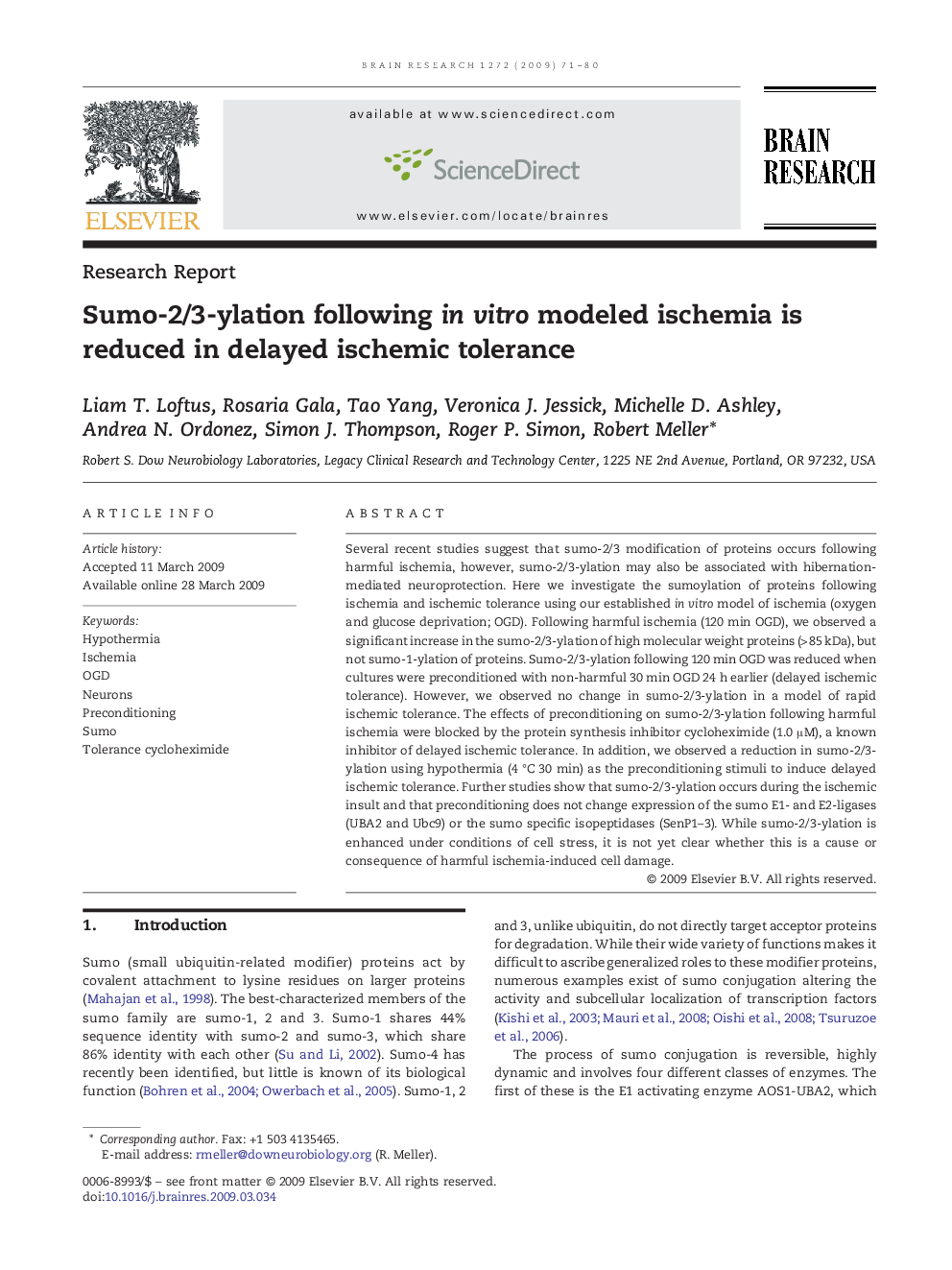| Article ID | Journal | Published Year | Pages | File Type |
|---|---|---|---|---|
| 4328298 | Brain Research | 2009 | 10 Pages |
Several recent studies suggest that sumo-2/3 modification of proteins occurs following harmful ischemia, however, sumo-2/3-ylation may also be associated with hibernation-mediated neuroprotection. Here we investigate the sumoylation of proteins following ischemia and ischemic tolerance using our established in vitro model of ischemia (oxygen and glucose deprivation; OGD). Following harmful ischemia (120 min OGD), we observed a significant increase in the sumo-2/3-ylation of high molecular weight proteins (> 85 kDa), but not sumo-1-ylation of proteins. Sumo-2/3-ylation following 120 min OGD was reduced when cultures were preconditioned with non-harmful 30 min OGD 24 h earlier (delayed ischemic tolerance). However, we observed no change in sumo-2/3-ylation in a model of rapid ischemic tolerance. The effects of preconditioning on sumo-2/3-ylation following harmful ischemia were blocked by the protein synthesis inhibitor cycloheximide (1.0 μM), a known inhibitor of delayed ischemic tolerance. In addition, we observed a reduction in sumo-2/3-ylation using hypothermia (4 °C 30 min) as the preconditioning stimuli to induce delayed ischemic tolerance. Further studies show that sumo-2/3-ylation occurs during the ischemic insult and that preconditioning does not change expression of the sumo E1- and E2-ligases (UBA2 and Ubc9) or the sumo specific isopeptidases (SenP1–3). While sumo-2/3-ylation is enhanced under conditions of cell stress, it is not yet clear whether this is a cause or consequence of harmful ischemia-induced cell damage.
